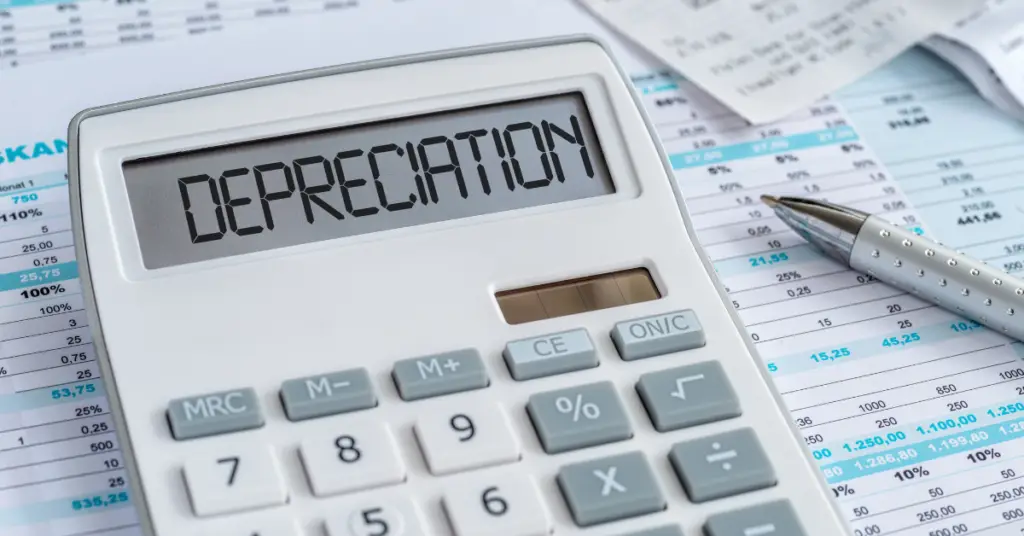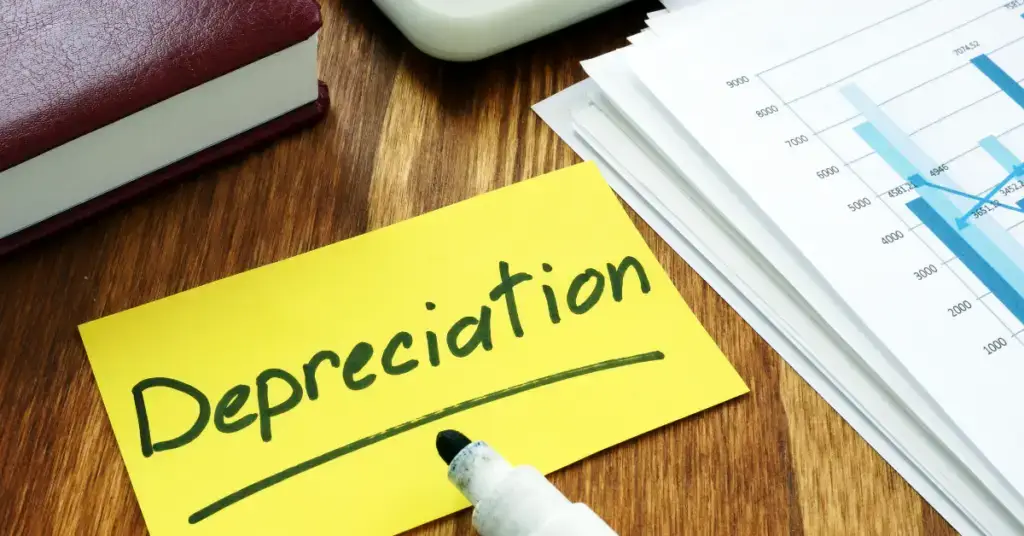Straight line depreciation is one of the easiest methods for spreading the cost of an asset over time. In business, understanding how assets lose value is crucial for accurate financial reporting. With this method, you can evenly distribute the cost of an asset across its useful life. It’s perfect for assets that wear down consistently, such as office equipment or buildings. By the end of this blog, you’ll know how to calculate straight line depreciation and understand its benefits. We’ll be discussing:
- What is Straight Line Depreciation?
- Straight Line Depreciation Formula
- How to Calculate Straight Line Depreciation
- Straight Line Example
- Other Methods of Depreciation
What is Straight Line Depreciation

Straight line depreciation is one of the simplest and most commonly used methods for depreciating the value of an asset over its useful life. It evenly spreads the cost of the asset across each year, making it easy to calculate and apply. In general, depreciation refers to allocating the cost of a tangible asset over its useful life. The goal of depreciation is to match the expense of the asset with the revenue it generates over time.
Straight line depreciation is widely used because of its simplicity. Businesses use it to depreciate assets such as machinery, vehicles, buildings, and office equipment. The key advantage of this method is that it results in equal depreciation expenses every year, making accounting easier and more predictable.
In contrast to accelerated depreciation methods, which front-load the expense in the early years of an asset’s life, straight line depreciation assumes that the asset will lose value at a consistent rate over time. This method is especially appropriate for assets that wear down or lose value at a steady pace, such as furniture, office equipment, or buildings.
Straight Line Depreciation Formula

The straight line depreciation formula is quite simple. It requires just a few key pieces of information: the initial cost of the asset, the salvage value (also known as the residual value), and the useful life of the asset. The formula can be expressed as:
Depreciation Expense = Cost of the Asset−Salvage Value/Useful Life
Where:
- Cost of the Asset: This is the initial purchase price of the asset.
- Salvage Value: The asset’s estimated residual value at the end of its useful life. It represents the amount the business expects to receive when the asset is sold or disposed of.
- Useful Life: This refers to the period over which the asset is expected to be used in the business, usually expressed in years.
This formula divides the depreciable cost (the asset’s initial cost minus the salvage value) by the number of years the asset will be in use. The result is the annual depreciation expense, which remains the same each year.
Related Read: Inventory Accounting: A Detailed Guide
How to Calculate Straight Line Depreciation

To calculate straight line depreciation, you need to gather the three components mentioned earlier: the cost of the asset, its salvage value, and its useful life. Let’s walk through the calculation process step by step:
- Determine the cost of the asset: This is the amount you paid to acquire the asset, including any costs necessary to prepare it for use (e.g., installation fees, and transportation costs).
- Estimate the salvage value: This is the amount you expect to receive from selling or disposing of the asset at the end of its useful life. If you don’t plan to sell it, you can assume a zero salvage value.
- Estimate the useful life of the asset: The useful life is the period over which you expect to use the asset in your business. This can be based on industry standards, the manufacturer’s recommendations, or your own experience with similar assets.
- Apply the straight line depreciation formula: Subtract the salvage value from the asset’s cost to determine the depreciable amount. Then, divide this amount by the useful life of the asset to get the annual depreciation expense.
Example
Let’s assume a company purchases a machine for $50,000. The company expects the machine to have a useful life of 10 years and estimates a salvage value of $5,000 at the end of that period. To calculate the straight line depreciation, follow these steps:
- Cost of the asset: $50,000
- Salvage value: $5,000
- Useful life: 10 years
Now, subtract the salvage value from the cost of the asset to find the depreciable amount:
Depreciable Amount = 50,000−5,000 = 45,000
Next, divide the depreciable amount by the useful life of the asset:
Annual Depreciation Expense = 45,000/10 = 4,500
So, the company will record an annual depreciation expense of $4,500 for the machine over the next 10 years.
This example shows how easy it is to apply straight line depreciation. Each year, the company will reduce the book value of the machine by $4,500 and recognize the same amount as an expense on its income statement. This process continues until the book value reaches the estimated salvage value.
Other Methods of Depreciation

While straight-line depreciation is simple and widely used, other depreciation methods may be more appropriate depending on the nature of the asset and the business’s accounting strategy. Here are a few common alternatives:
Declining Balance Depreciation:
This method accelerates depreciation, meaning that the asset depreciates more in the early years of its life and less in later years. The most common version is the double declining balance method, which calculates depreciation by applying a constant percentage to the asset’s remaining book value. This results in higher depreciation expenses early on.
Units of Production Depreciation:
This method bases depreciation on the asset’s actual usage, rather than time. Businesses often use this method for machinery or equipment that wears down based on production levels. To calculate depreciation, divide the total depreciable amount by the asset’s expected total output (e.g., units produced, hours used), and then multiply this rate by the actual usage during the period.
Sum of the Years’ Digits Depreciation:
This is another accelerated method that allocates more depreciation expense in the earlier years of an asset’s life. The method uses a fraction to calculate the depreciation expense for each year, with the numerator being the asset’s remaining useful life and the denominator being the sum of all the years of the asset’s life.
MACRS (Modified Accelerated Cost Recovery System):
This is the depreciation method used for tax purposes in the U.S. under the Internal Revenue Code. MACRS allows businesses to depreciate assets over a shorter time, which can result in higher depreciation deductions in the early years of an asset’s life. Unlike straight line depreciation, MACRS uses different percentages based on asset classes.
Each method has its advantages and disadvantages, and the choice of method can impact financial statements, taxes, and cash flow. Businesses often choose the method that best matches the pattern of the asset’s wear and tear or provides the greatest tax benefits.
Conclusion
Straight line depreciation is a straightforward and effective way to allocate the cost of an asset over its useful life. By spreading the expense evenly across each year, it simplifies the accounting process and ensures consistency in financial reporting. The method is especially useful for assets that depreciate at a steady rate, such as office equipment, buildings, and certain types of machinery.
However, straight line depreciation may not always be the best option for every asset. Other methods, such as declining balance or units of production depreciation, might better reflect the actual usage or wear of an asset. Understanding the different depreciation methods allows businesses to make informed decisions about which approach to use.
Ultimately, by calculating depreciation accurately, businesses can better manage their financial resources, optimize tax strategies, and make smarter investment decisions. Whether you’re using straight-line depreciation or another method, depreciation is a key element of sound financial planning that helps reflect the true cost of owning and using assets over time.
Manage your Inventory and Accounting Processes with Vencru!
Related Content






